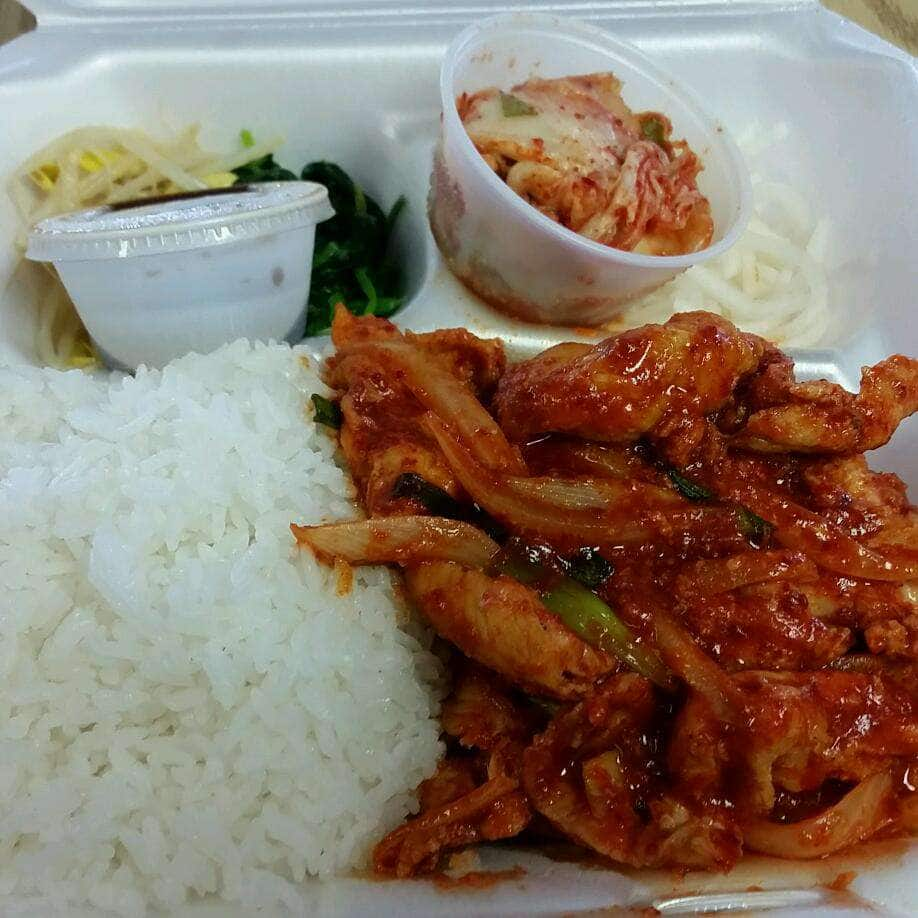Table Of Content

Enduring Korean barbecue specialist Yangmani treats intestines on the same level as primal cuts, and the crowds every night are evidence of the restaurant’s popularity. The restaurant, which has a second location in Rowland Heights, serves a stellar kimchi fried rice studded with nubs of crisped gopchang. “Traditional mall restaurants were casual dining chains like Chili’s, TGI Fridays, and quick-service restaurants in food courts.
Best Chinese Restaurants In and Around Los Angeles
The spicy-braised mackerel is a show stopper, with layers of rich flavor that go perfectly when spooned over multigrain rice. Koreatown’s longtime mom-and-pop (in this case, mom-and-son) restaurant Jun Won Dak is serving up some of the city’s best samgyetang, a comforting cold-weather soup of ginseng chicken. Hanu’s trick might be the banchan robots roaming the space, but the restaurant placed on the ground floor of one of LA’s larger spas serves some of the neighborhood’s best Korean barbecue menus. The smallest combination feeds potentially four people, and comes with an impressive array of jun, or fried vegetables and fish filets, and even galbijjim as a part of the package.
Exceptional Korean Restaurants to Try in Los Angeles
Expect lines at one of Koreatown’s more popular new restaurants, which has a wide menu of soup-based dishes, including gukbap, seolleongtang, and yukgaejang. The chilled beef broth paired with freshly pressed buckwheat noodles is easily one of the most refreshing Korean dishes. On the other end of the heat spectrum, shareable jeongol like mukeunji pork ribs pack tons of umami from long-fermented kimchi simmering on the table while diners eat. Everything about the meal, from the banchan to the finishing fried rice on the tabletop grill, is engineered for maximum flavor. This restaurant might be on the small side, but it serves up well-crafted traditional Korean dishes with huge flavor. The braised short ribs are a table-pleaser, along with the strong pot bibimbap.
Mapo Dak Galbi
This is the premier Korean barbecue restaurant in Koreatown, and Park’s delivers with prime-grade meats served at the table, along with a slew of other traditional Korean dishes shared in a clean, smoke-free ambiance. The quality of the meat and banchan is simply unsurpassed, rivaling some of the best in Seoul itself. The front parking lot has been converted into an outdoor Korean barbecue setup for additional seating. A big chain in Asia, Magal BBQ continues to prepare some of the best mid-range Korean barbecue in town, featuring flavorful off-cuts and non-primal selections that still offer plenty in the way of flavor. In fact, the restaurant was the first in Koreatown to popularize de-shelled marinated crab bowls with crab sourced directly from Korea.
Jeong Yuk Jeom is a good high-end KBBQ alternative for those who are tired of Park’s, Daedo, or AB Steak and want to try something new. Classic Korean barbecue Soowon might get a little overshadowed by its neighbor Park’s BBQ down the street, but the longtime restaurant still excels with high-quality beef and attentive service. The cloudy bone marrow broth here is legendary, as are the tender slabs of brisket and various organ meats floating in it. Build the meal with seasonings, kimchi, and rice, along with a dash of salt and sprinkling of green onions. Longer dry aging means more concentrated flavor, sharper aroma similar to aged cheese and meaty texture. Chef Akira Back suggests to enjoy our steaks with our various homemade salts and condiments to enhance the flavor.
This very intentional Korean barbecue spot from Seoul serves just American-certified Angus prime beef, and only ribeye steaks at that. Seared on specialized cast iron skillets, diners will try ribeyes sliced into three distinct cuts and served with kkakgudi and other banchan that are fermented in Korea and shipped to the U.S. It makes sense that the former Honey Pig space would become another Korean barbecue restaurant dedicated to pork.
Chick-fil-A restaurants were only located in mall food courts for the company’s first 20 years. The amount of space dedicated to food in malls has grown from 5% in the 1990s to 15 to 20% today, according to Deloitte. Food was long an afterthought at malls, and department stores were the primary reason shoppers visited. There’s a new guard in malls,” said Chris Simms, the CEO and founder of Lazy Dog, which has around 50 ski lodge-themed restaurants around the country.
Landlords are counting on emerging restaurant brands like Lazy Dog, Gen Korean BBQ and Postino Wine Café to draw customers back to malls. So-called “eatertainment” concepts such as Puttshack and Topgolf, which can extend the amount of time people spend in a mall, are expanding. One fast-growing chain targeted to families, Kura Revolving Sushi Bar, delivers plates to diners on conveyor belts as rolling robots serve drinks.
11 Amazing Korean Restaurants in Austin - Eater Austin
11 Amazing Korean Restaurants in Austin.
Posted: Fri, 15 Nov 2019 08:00:00 GMT [source]

But Surawon Tofu House makes its own tofu on the premises, resulting in a rich, almost nutty tofu with a lot more complexity. The combo deals here are fantastic too, such as the one with fried mackerel big enough to split for two. Gen Korean BBQ is an example of one of the new breed of restaurants growing in malls. Chick-fil-A closed its original location at Greenbriar Mall in Atlanta last year after 56 years.

“A lot of these regional malls are rebranding their spaces to attract restaurants,” Kim said. Many quick-service restaurants like McDonald’s and Chick-fil-A have closed mall locations. Koreatown loves soondubu, the silken tofu stew popularized at places like BCD and Beverly Soontofu.
With a spartan interior and bustling dining room, Mapo Galbi is a spicy chicken specialist, grilling tender chicken thighs cut into smaller pieces along with cabbage, rice cakes, carrots, and plenty of gochujang sauce. The whole pan simmers and reduces over time, with servers finishing meals with a fried rice loaded up with perilla leaves and seaweed laver. Korean barbecue has become an integral part of Southern California’s culinary and cultural fabric. There's something appealingly primal about the experience — grilling rosy-red slabs of impossibly well-marbled beef atop hissing coals.
As U.S. malls race to reinvent themselves, they’re turning to sushi conveyor belts, craft-beer membership clubs and Korean barbecue to replace burgers and fries.
While the soups are more than respectable, crowds wait in line for the meat festival in a stone bowl. Los Angeles’s Koreatown is without question the mecca of Korean cuisine in America. The meals served in this vibrant neighborhood, full of neon lights and late nights, are so stellar that even food obsessives visiting from Seoul marvel at the sheer quality and quantity that is available. While most diners are quick to limit Korean food to all-you-can-eat barbecue feasts, there are a tremendous number of regional specialties worth seeking out in and beyond Koreatown. Featuring knife-cut noodles swimming in seafood broths and bubbling cauldrons of pork soups, here are 18 essential Korean restaurants to try in Los Angeles.
This sprawling, dimly lit, upscale Korean barbecue restaurant has a little bit of everything. Jeong Yuk Jeom’s best offering is dry-aged beef, something of a rarity in Koreatown these days. The butcher’s pride sets take a page from New York City’s award-winning Cote, with prime and dry-aged cuts at three different prices.
The live uni is another popular specialty item that is served in an urchin shell and paired with marinated rice and premium fish roe. A truly quirky restaurant that’s found a steady following on social media, Borit Gogae is a very rustic Korean experience that works as a contrast to the highly developed country and its technological advancements. With all of that progress, there’s a yearning both in Seoul and even here in Los Angeles for simple, country cooking and Borit Gogae nails the experience, from the dozen or so banchan, mixed barley rice, and soup. Bring a few friends and enjoy this bargain of a tasting menu served all at once, Korean-style.

No comments:
Post a Comment